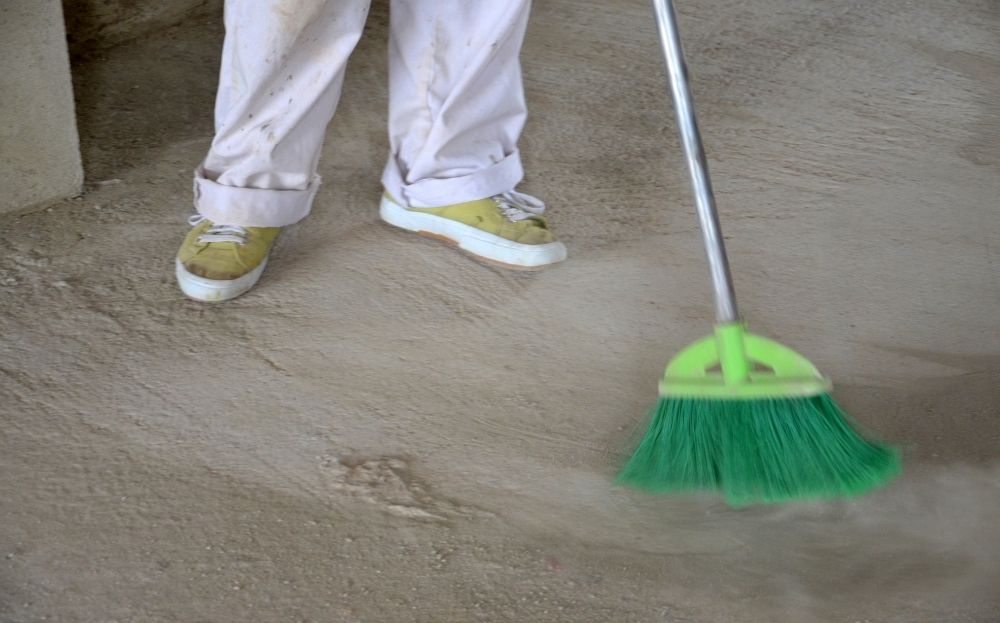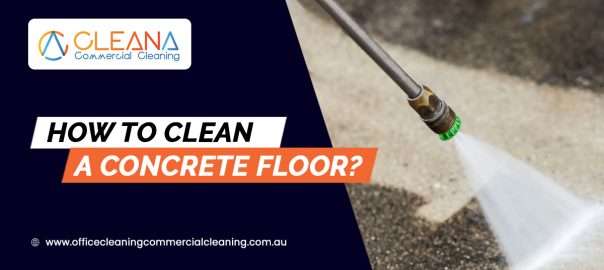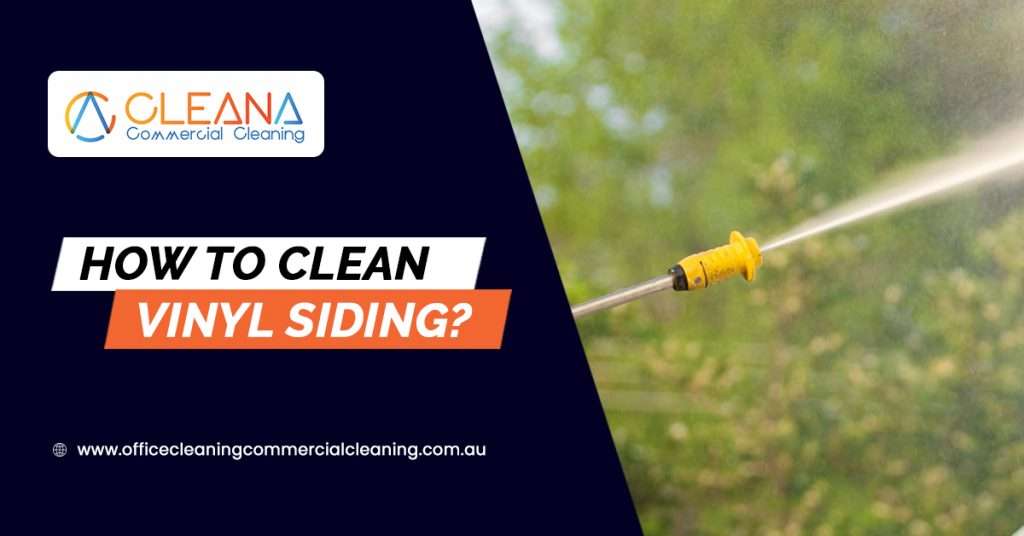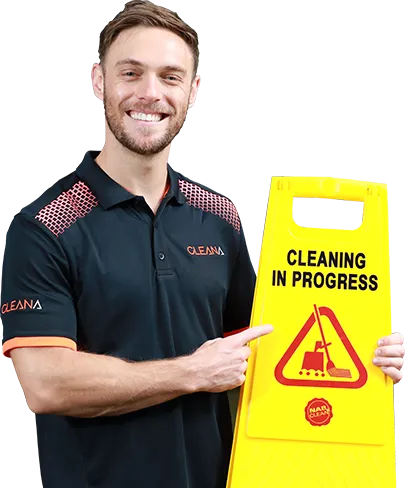Concrete is a common flooring material found in basements, garages, driveways, and front yards. It’s arguably one of the hardiest and most resilient flooring materials out there, but due to its porous surface, it can get dirty quickly. Liquids get absorbed into the pores, eventually creating tough stains and marks.
Concrete can be sealed to create a non-porous finish, which works to prevent the development of stains and therefore make cleaning it far easier. However, cleaning unsealed concrete requires a bit more effort – especially when a stain is old.
Fortunately, there are several ways to clean a sealed or unsealed concrete floor! You might have to repeat the process more than once for tough stains, which is why cleaning concrete in stages provides the best results. Here is explained by our professional commercial cleaners how to clean a concrete floor!
Mop And Mild Cleaner – For Sealed Concrete Floors
Sealed concrete floors are non-porous, which means they aren’t as likely to develop tough stains. The best way to clean a stain on a sealed concrete floor is with a bucket of warm water mixed with a mild cleaner and a mop. Don’t use harsh chemicals or acids, as this can damage the sealant.
Oven Cleaner Method – For Small Stains
Oven cleaner is one of those universal cleaning products that will clean just about any tough stain. It can remove oil stains, transmission fluids, and grease from concrete. For this method, you will need an oven cleaner, a stiff brush, and a bucket of water.
Lather a layer of oven cleaner on the stain and leave it to set on the porous surface for 5 to 10 minutes. Scrub the oven cleaner further into the surface with a stiff brush using circular motions. Then, rinse it away with a bucket of water. You may have to repeat this process the next day if the stain is still there.
WD-40 Method – For Fresh Oil Stains
If you’re lucky enough to find an oil stain on your concrete floor right away, WD-40 will do the trick. Like oven cleaners, everyone needs WD-40 in their inventory for more than squeaky door hinges.
After finding a fresh oil stain on the concrete, pour as much WD-40 as it takes to cover the spill directly to the stain. Allow it to set into the pores for 5-10 minutes, and then spray it off with a bucket of water or a hose.
WD-40 is also useful for removing glue-like stains from concrete floors, such as carpet glue.
Pressure Washer Method – For A General Clean
Using a pressure washer is a great way to clean a concrete floor. If there are no tough stains or if you simply want to give the surface a good clean, a pressure washer will do the trick.
Muriatic acid is one of the best acids to use when cleaning a concrete floor. Follow the can’s instructions and apply them to the chosen area. Sprinkle baking soda over the acid to neutralize it.
Then, rinse the acid and baking soda away with a pressure washer set to 1200 PSI. You can technically use a regular garden hose, but a pressure washer makes the job far quicker.
Sawdust Method – For Big Oil Stains

The best way to deal with big oil stains on concrete floors is to try and soak up the oil spill before it stains inside the porous surface. To do this, sprinkle sawdust (or cat litter if you have any) across the oil stain and leave it overnight. This should allow enough time for the oil to be drawn out.
Then, brush the debris away with a broom. You may need to also use a vacuum to ensure all the particles have gone.
Next is to apply powdered dishwasher detergent to the area. This will help to moisten the stain again if it has dried from the sawdust. Allow this to soak into the surface for 45 minutes to an hour.
Once the dishwasher detergent has completely sunk into the floor, pour boiling water over the area and then scrub it with a stiff brush. You should start to see the stain disappear the more you continue to scrub. After, mop the floor with water to ensure the detergent has gone.
For every gallon of hot water you put in a water bucket, add two ounces of washing soda. This is a good mixture to clean the entire floor.
If the stain is particularly tough, you may have to complete this process once a week until it has gone.
TSP Method – For Rust Stains
Garage concrete floors are bound to develop rust stains from constant exposure to bikes, machines, and other metal objects. Luckily, rust stains can be easily removed.
For every gallon of hot water, mix one ounce of TSP (trisodium phosphate). Wet the stained area with this mixture thoroughly, and then use a stiff brush or the stiff bristles of a broom to scrub it into the stain. Leave it for 15 minutes to soak in, and then rinse it off with a bucket of clean water, a pressure washer, or a hose.
Ammonia Method – For Discoloration
Concrete floors are bound to get discoloured after constant use. To remove any discolouration, make a solution of one gallon of water with one cup of ammonia.
Scrub this solution into the discoloured area with a stiff brush and allow it to soak into the surface for 5-10 minutes if the discolouration isn’t lifted. Then, rinse the solution away with clean water.
Frequently Asked Questions
Does Vinegar Clean Concrete Floors?
White vinegar is a brilliant way to clean the stains and dirt on concrete floors – as long as the mixture is properly diluted.
To clean concrete floors with vinegar, combine 3 cups of white vinegar with 3 cups of warm water. Pour the solution over the affected area and allow it to soak into the porous surface for around 10 minutes before scrubbing it further in with a stiff brush. Rinse the surface away with clean water.
You may have to repeat this method once or twice more for tough stains, and if that doesn’t work, then try using pure vinegar instead.


